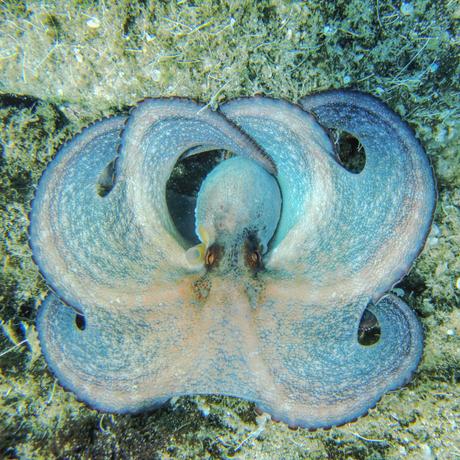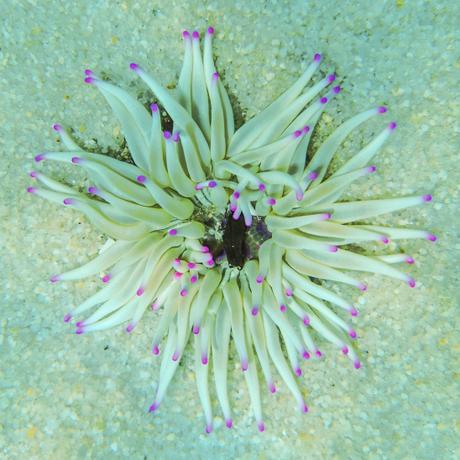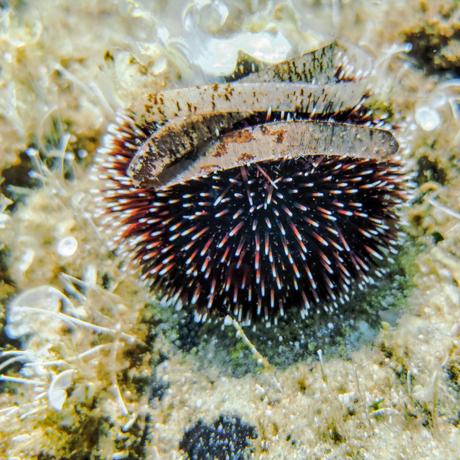
When feeling in danger, octopuses spread out their arms, pump water through their siphon and exhibit phosphorescent pigments. Octopuses are animals with bilateral symmetry, despite these postures make them looking like radial. “My” octopus did not ink, maybe it was not so frightened after all.
Sedentary marine tube worms quickly retract their colorful bristles (visible) in their calcareous tube (not visible). Despite their exposed, radial head, they are bilateral annelids

Sea anemones are true radial animals. This anemone belongs to the Actinaria subclass

Sea urchins (Echnoidea) are true radial symmetry animals

A runaway octopus with its usual pigmentation
This sea anemone belongs to the Spirularia subclass
Sea stars (Asteroidea) are true radial animals. This specimen is crawling through a bed of peacock tail’s algae.
Pictures shot with Olympus THought1 and Huawei P30 Pro. Click each picture to zoom in.
Previous episodes:
Destination: the Holy Mountain
Under Your Protection

